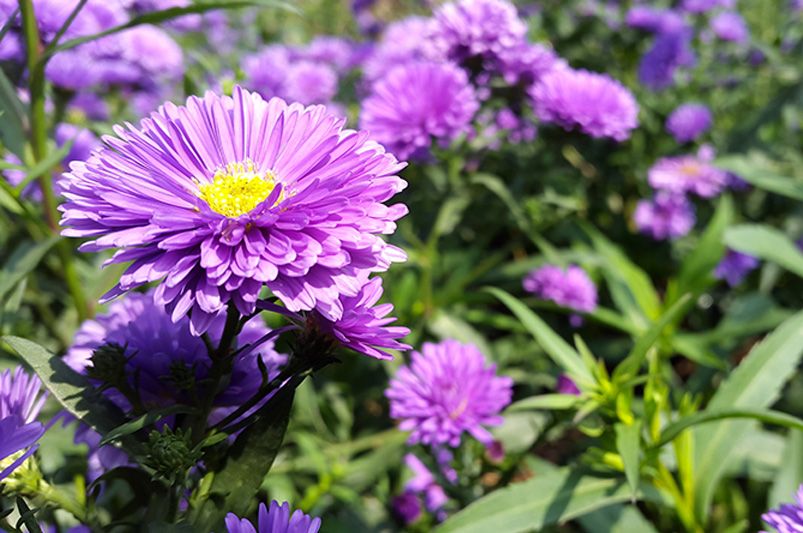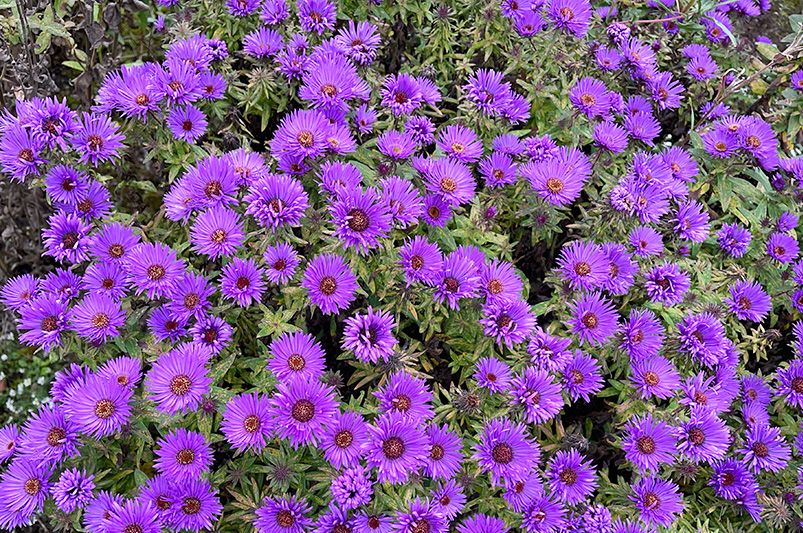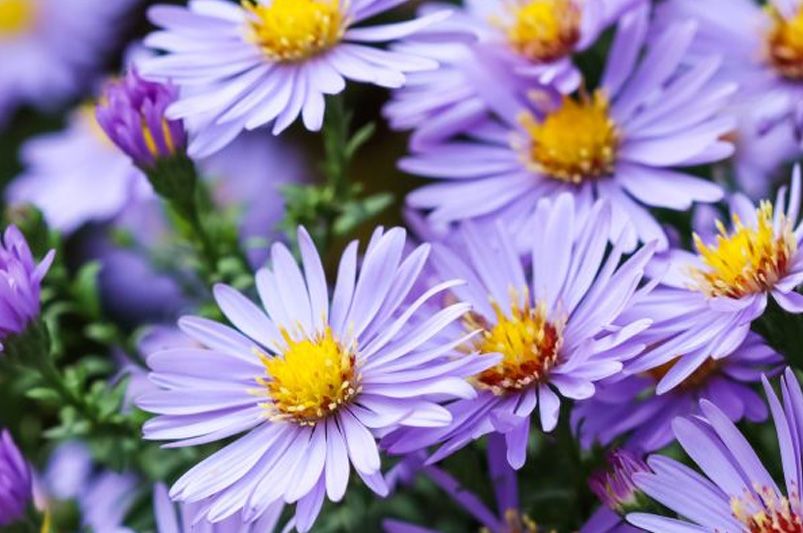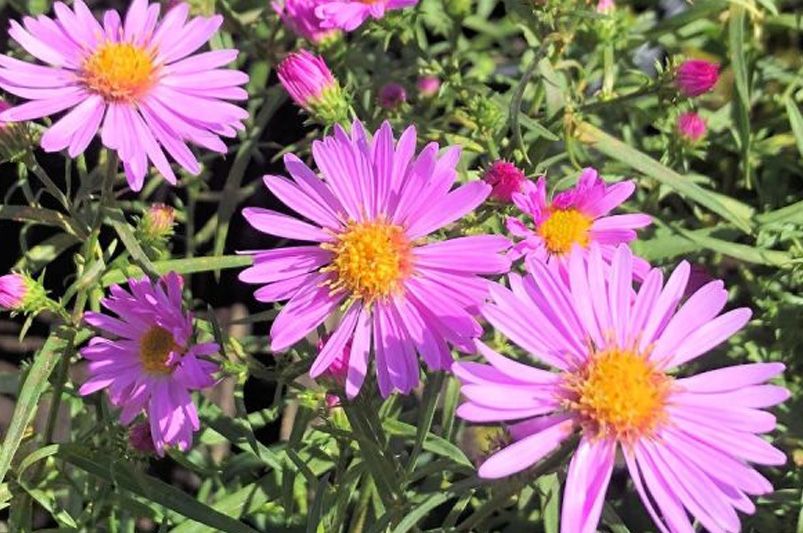
More Than Just Fall Flowers: Exploring Aster Varieties for a Year-Round Appeal
Published: 23/07/2024 | Updated: 23/07/2024
Asters, the delightful members of the Asteraceae family, are often celebrated for their vibrant blooms that grace our gardens in the fall. However, these versatile perennials offer far more than just autumnal beauty. With an incredible diversity spanning over 600 species, asters present a kaleidoscope of colors, forms, and bloom times, ensuring their presence in the garden throughout the year.


This article dives into the multifaceted appeal of aster varieties, exploring their botanical wonders and showcasing their ability to bring year-round interest to any landscape. Join us as we unravel the secrets of these captivating flowers and discover how to harness their versatility to create a truly enchanting and ever-evolving outdoor space.
Botanical Characteristics
Asters are a diverse group of flowering plants, with over 600 species ranging from low-growing groundcovers to tall, stately perennials. Their daisy-like flowers come in a kaleidoscope of colors, including shades of purple, blue, pink, white, and red. The flower heads consist of two types of florets: the vibrant ray florets that form the petals and the tiny disk florets in the center.
The foliage of asters is equally varied, with some species sporting slender, grass-like leaves, while others boast broad, heart-shaped leaves. Their growth habits range from compact mounds to upright clumps, making them suitable for a wide range of garden settings.
One of the most remarkable aspects of asters is their sheer diversity in size and form. Some varieties, like the delicate calico aster, stand just a few inches tall, while others, like the towering New England aster, can reach heights of up to six feet. Their flower shapes also vary, with some displaying single rows of petals and others featuring double or semi-double blooms.

Purple Dome New England Aster
The Purple Dome New England Aster (Aster novae-angliae 'Purple Dome') graces the autumn garden with its rich, purple daisy-like flowers atop compact, bushy foliage. Flourishing in USDA Hardiness Zones 4-8, this perennial brings a much-needed splash of color when many other plants are beginning to fade.
Plantation & Growth
Ideal for full sun locations, Purple Dome thrives in well-drained, moist soil rich in organic matter. It's suitable for planting in the spring or fall, allowing time for the plant to establish itself before the growing or dormant season. With a mature height and spread of 18-24 inches, it is perfectly sized for borders, wildflower gardens, or as an eye-catching mass planting.
Plant Care
Though relatively low maintenance, Purple Dome benefits from regular watering, especially during dry spells, to keep its foliage lush and prevent wilting. A layer of mulch can help retain soil moisture and maintain even soil temperatures. Feed with a general-purpose fertilizer in the spring to support vigorous growth and abundant blooms.
Pruning & Propagation
To encourage bushier growth and more flowers, pinch back the tops of the plants in early summer. After blooming, deadheading can promote a tidier appearance, though leaving some spent blooms can provide winter interest and food for birds. Divide clumps in early spring every few years to rejuvenate and propagate the plants.
Common Pests & Diseases
Purple Dome is notably disease-resistant but should be monitored for common pests like aphids and powdery mildew. Ensuring good air circulation around plants and avoiding overhead watering can minimize these risks, keeping your asters healthy and vibrant through the fall season.

Sapphire Aster
The Sapphire Aster (Symphyotrichum novae-angliae 'Sapphire'), with its striking blue flowers and yellow centers, adds a dazzling touch to the autumn landscape. Adaptable to USDA Hardiness Zones 4-8, it stands out for its vibrant late-season blooms and sturdy, upright stance.
Plantation & Growth
Sapphire Aster excels in full sun but tolerates partial shade. It prefers well-drained, moist soil enriched with organic matter. Planting in spring or early fall allows the roots to establish before extreme weather conditions. This variety grows to a height of 3-4 feet, making it a stately presence in the back of border arrangements, native gardens, or as a stand-alone specimen.
Plant Care
Regular watering is essential during the first growing season to establish a deep, robust root system. After that, Sapphire Aster is moderately drought tolerant. Applying a layer of mulch helps retain soil moisture and keep roots cool. An annual dose of balanced fertilizer in early spring encourages healthy growth and abundant flowering.
Pruning & Propagation
Cutting the plant back by half in early summer can prevent flopping and promote denser growth and more blooms. Propagation is easily achieved by dividing clumps in the spring every few years, which also helps maintain the plant's vigor.
Common Pests & Diseases
Sapphire Asters are relatively disease-resistant but may encounter issues with powdery mildew if air circulation is poor. They're also susceptible to aster yellows, a disease spread by leafhoppers. Maintaining clean garden practices, ensuring well-spaced plantings, and controlling insect pests are key measures to prevent these problems, ensuring your Sapphire Asters remains a stunning feature in your autumn garden.

Woods Pink Aster
Woods Pink Aster (Aster × dumosus 'Woods Pink') is a delightful perennial known for its vibrant pink, daisy-like flowers with sunny yellow centers. Suitable for USDA Hardiness Zones 3-8, this compact aster variety offers a brilliant splash of color from late summer into fall, perfect for border fronts, container gardens, or as a colorful ground cover.
Plantation & Growth
Woods Pink Aster performs best in full sun but can tolerate light shade. It prefers fertile, well-drained soil but is adaptable to various soil types, provided they remain moist. Planting should ideally occur in either spring or fall, allowing the plants to establish well either before the heat of summer or winter's chill. This variety typically grows 12-18 inches tall and can spread about 12 inches, forming a dense mat of green foliage that supports its vibrant blooms.
Plant Care
Consistent moisture is key, especially during dry periods, to keep the foliage lush and the blooms vibrant. Applying a slow-release fertilizer in the early spring can promote vigorous growth and flowering. Mulch around the base to help retain soil moisture and control weeds.
Pruning & Propagation
Pruning is minimal, but deadheading the spent flowers can encourage further blooming and prevent self-seeding. You can propagate Woods Pink Aster by division in spring to manage its spread and rejuvenate older clumps.
Common Pests & Diseases
While generally robust, it's vigilant to watch for signs of powdery mildew and rust, particularly in humid conditions or if airflow is limited. Regular garden hygiene and sufficient spacing among plants help minimize these issues, maintaining the health and beauty of Woods Pink Asters in your garden.
Year-Round Magic: Unveiling the Aster's Full Potential
Asters are truly remarkable plants offering year-round garden interest and beauty. From their early spring bloomers to their late-falling winter stalks, these resilient flowers grace our landscapes with a continual display of vibrant colors and textures. Their versatility knows no bounds, as they thrive in various conditions and complement a wide array of companion plants.
What sets asters apart is their ability to extend the garden's charm well beyond the traditional growing season. As many plants fade away, asters come into their full glory, painting the autumn landscape with their radiant hues and providing a vital food source for pollinators. Even in the depths of winter, their architectural forms and evergreen foliage continue to captivate, adding structure and visual interest to the dormant garden.
By embracing the diverse world of asters, gardeners can create a truly dynamic and ever-changing outdoor space that celebrates each passing season's beauty. Whether used as focal points, borders, or naturalized drifts, these remarkable flowers will surely delight and inspire, reminding us of nature's enduring cycle of renewal and rebirth.
Transform Your Garden with ShrubHub Today!
At ShrubHub, we understand the power of a beautifully landscaped yard and believe everyone deserves a space that brings joy and serenity into their lives. With our unparalleled selection of high-quality trees, shrubs, and groundcovers combined with cutting-edge 3D landscaping designs, achieving your dream garden has never been easier or more affordable.
Why Choose ShrubHub?
A World of Options: From ornamental trees to vibrant shrubs, find everything your garden needs, handpicked from the country's best nurseries.
Customized For You: Our 3D custom designs are tailored to fit your yard, style, and preferences, ensuring your outdoor space is truly your own.
From Design to Reality: We don't just design; we deliver. High-quality plants are delivered to your doorstep, and the best local contractors are ready to transform your vision into reality.
Save Big, Dream Bigger: Say goodbye to overpriced, unimaginative landscaping. We offer world-class designs and professional consultations at a fraction of the cost.
ShrubHub is committed to revolutionizing the landscaping industry, one beautiful yard at a time. Whether it's a cozy backyard haven or a sprawling garden masterpiece, our team is here to guide you through every step of the process, ensuring a smooth, stress-free journey to a breathtaking outdoor space.
Your Dream Garden Is Just a Click Away.
Start your journey with ShrubHub today and see why we're the fastest-growing online full-service landscaping company in the world. Quality, creativity, and satisfaction lie at the heart of everything we do.


